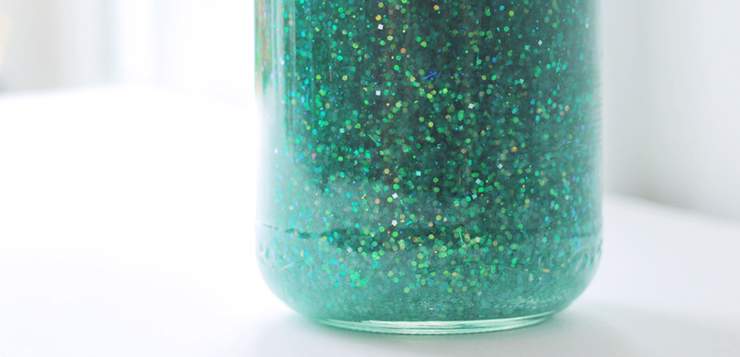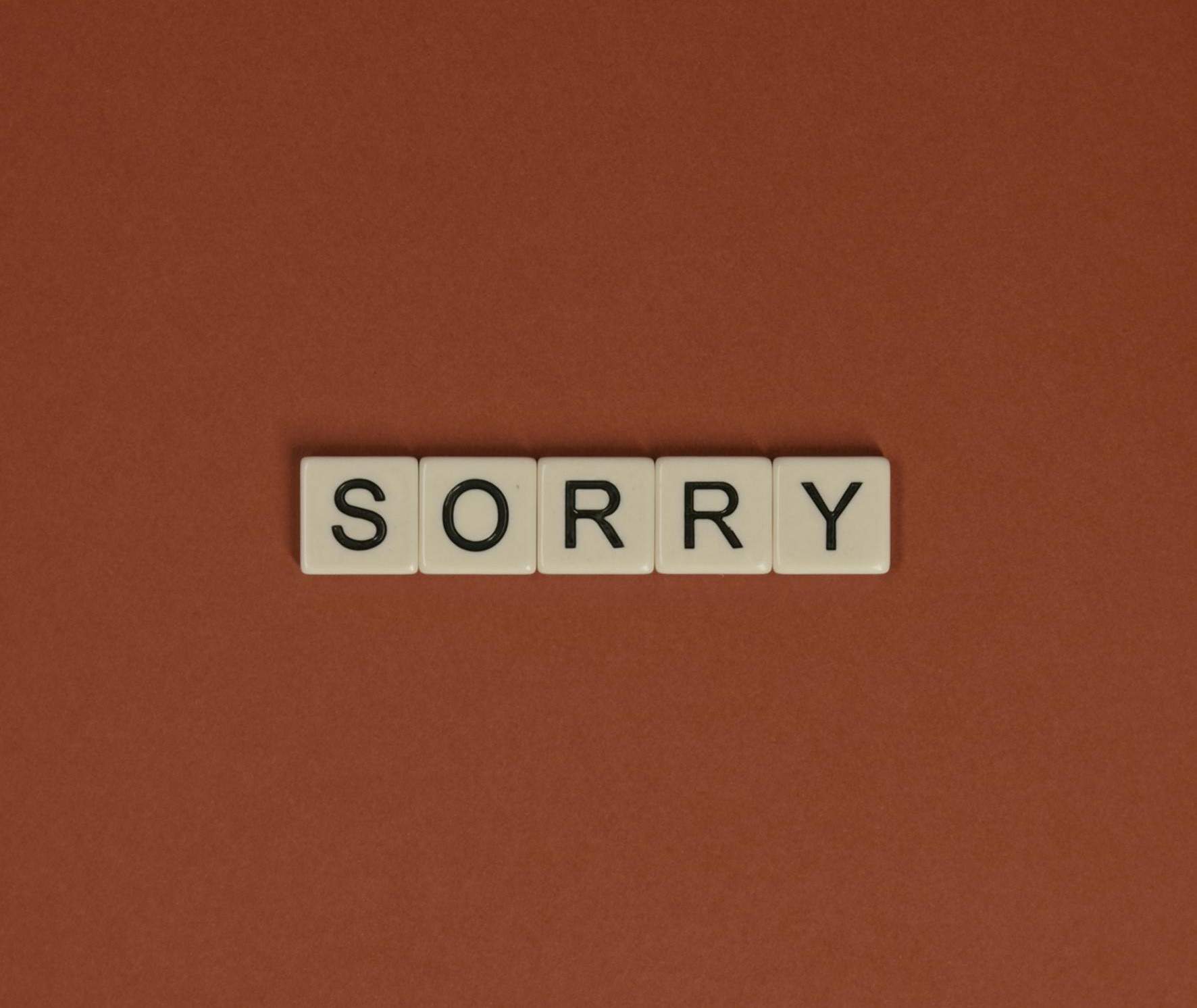Kids, especially struggling ones, tend to act out their difficulties rather than share them in words. We adults are often only marginally better. When words are unavailable, it helps to find other ways to demonstrate the connection between thoughts, feelings, and behaviors.
A snow globe or glitter jar is one of the most powerful visual metaphors for that connection; it illustrates how mindfulness—the cultivation of stillness in the face of swirling chaos of life—affects us. At first I used to do this practice only with young kids, but I’ve since found that even teens enjoy it.
How to Make a Glitter Jar
You can use a mason jar, a spice jar, or even a plastic water bottle for this practice. Be sure to use glitter that sinks rather than floats. Adding some glycerin to the water slows down the fall of the glitter.
If you’d prefer to avoid using glitter, you can make a more eco-friendly version by using different-colored beads, a mix of food coloring and oil, or even pieces of LEGO you already have around the house.
Fill the jar to the top with water. Have your children pick three colors of glitter: one to represent thoughts, one to represent feelings, and one to represent behaviors (or “urges to do things”). Drop a few pinches of each color glitter into the water, which represents their mind, and maybe a few drops of food coloring. Seal the jar with its lid or duct tape.
With each event they name, swirl and turn the jar, demonstrating how it becomes difficult to keep track and see clearly what our thoughts, feelings, and urges are.
Ask the children what kinds of things will make the glitter in the jar swirl. Encourage answers that reflect distressing events (fights with siblings, losing in sports) and positive ones (getting a good grade, making a new friend), events in the foreground (sick siblings) and events in the background (scary stories on the news). With each event they name, swirl and turn the jar, demonstrating how it becomes difficult to keep track and see clearly what our thoughts, feelings, and urges are.
How to Use a Glitter Jar for Mindfulness
There are many variations of this practice, depending on what you want to emphasize. My colleague Jan Mooney, who often works with groups of kids, uses a giant jar that all the kids can add glitter to. Each color represents different feelings the kids have. Other variations include using a few plastic beads to represent behaviors and watching until the behaviors separate from thoughts and feelings. Kids can also try to focus on just one color, or one piece of glitter until it settles, or all of them.
Your script can go something like this:
- The jar is like our mind, and each color of glitter represents something different in our mind.
- Let’s put in red for thoughts, gold for feelings, and silver for urges to do things. (Pour in a little bit of glitter with each comment.)
- Now we seal up the jar. (Put the lid on the jar and seal it.) Then we start our day.
- We wake up, and things are pretty settled. We can see that clearly. (Show how all the glitter has settled on the bottom of the jar.)
- But pretty soon, things start swirling around. Maybe we are running late (swirl the jar). Our big sister eats the last pancake for breakfast, and it leads to a fight (shake the jar). We hear scary things on the news in the car ride to school (swirl the jar). We get to school and find out we aced the test (shake the jar).
- Now it’s only a few minutes into the school day, and we can’t see clearly because all of our thoughts and feelings and urges are getting in the way.
- So what is the one thing we can do to get the glitter to settle and see clearly again?
- Be still! And what happens when we are still? We can see clearly again.
- There is also no way to rush being still. We can’t push all the glitter down to the bottom. We just have to watch and wait. No amount of effort will make it settle sooner.
- When things become clear, we’ll know the wise next thing to do. In fact, that’s one definition of wisdom: seeing things as they are and choosing how to act.
- While we wait, does the glitter go away? No, it stays at the bottom. Our thoughts and feelings and urges are still in our minds, but they are no longer in our way, clouding our vision.
A finished glitter jar can serve as a visual timer for other practices, such as breathing practices. For example, you can shake the jar and say: “Let’s do some mindful breaths until the glitter settles.”
We actually don’t want to get rid of the thoughts and feelings and urges. We just want them out of the way so they don’t prevent us from seeing clearly.
Some families use the jar as a “calm-down jar,” to mark and measure calm-down time. Ideally, the entire family can use the calm-down jar together when there is a conflict: “We are all upset with lots of thoughts and feelings rights now. So let’s all take a break until the glitter in the calm-down jar has settled and then start talking again.”
There are even a few glitter jar and snow-globe smartphone apps, which one kid I work with just loves.
One particularly sharp student of mine pointed out that you could just take a filter and make the jar clear again. He had a point, and it wasn’t until I was driving home that I came up with the response: “We actually don’t want to get rid of the thoughts and feelings and urges. We just want them out of the way so they don’t prevent us from seeing clearly.”
This article was adapted from Dr. Christopher Willard’s book Growing Up Mindful.
Read more
The Nature Remedy: Find Freedom from Tech Overload
In this excerpt from her book Less Screen More Green, Kerry Crofton provides Mindful Tech Plans™ with evidence-based strategies to find freedom from tech overload, along with advice from Harvard digital wellness expert Dr. Michael Rich. This is the first in a three-part series on finding a healthier balance with tech at home, work, and school.
Read More
How to Model Mindfulness When Talking to Kids
Kids are highly perceptive—so how can we give them feedback while also modeling mindfulness, calm, and kindness? Mindfulness Director and educator Alex Tzelnic shares tried-and-true tips for effective, mindful communication, whether in the classroom or at home.
Read More
All of That: Reflections on Motherhood and Letting Go
Mindful associate editor Siri Myhrom reflects on the transition away from being a stay-at-home-freelancing mom, and how motherhood means being with a constantly shifting mix of emotions.
Read More
Calming Hands: A Mindfulness Practice for Kids to Ease Difficult Emotions
Try this creative, calming mindfulness practice for kids and families, designed to help ease difficult emotions and manage stress.
Read More











